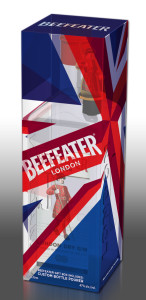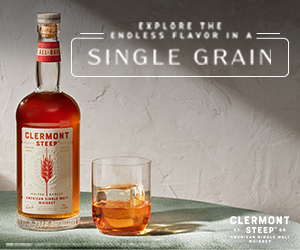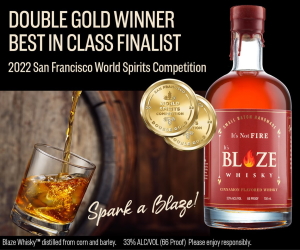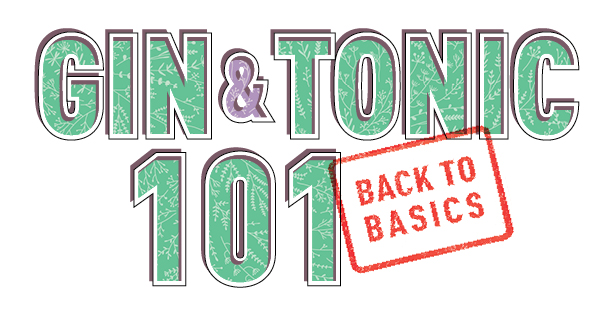
By W. Blake Gray
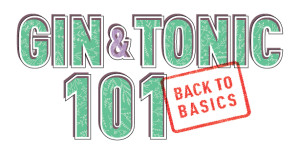 Winston Churchill once declared, “The Gin and Tonic has saved more Englishmen’s lives, and minds, than all the doctors in the Empire.” A Gin and Tonic is the only good cocktail you can have on an airplane in coach class. It’s also a gourmet obsession in Spain that has made its way to the trendiest American cocktail bars. And because a G&T doesn’t require any fancy syrups or shrubs, you don’t need to be much of a mixologist to make one at home.
Winston Churchill once declared, “The Gin and Tonic has saved more Englishmen’s lives, and minds, than all the doctors in the Empire.” A Gin and Tonic is the only good cocktail you can have on an airplane in coach class. It’s also a gourmet obsession in Spain that has made its way to the trendiest American cocktail bars. And because a G&T doesn’t require any fancy syrups or shrubs, you don’t need to be much of a mixologist to make one at home.
As with wine, the gin market is hot at the high end and cool on the bottom shelf. Gin is still a small percentage of the total spirits market, about 4% according to Nielsen. But sales by value are growing while sales by volume are actually dropping. So this is a good time to switch inventory away from the super-cheapies and to branch out into some of the new gins coming onto the market. And a classic, refreshing, deceptively powerful G&T could prove to be your MVST (Most Valuable Selling Tool).
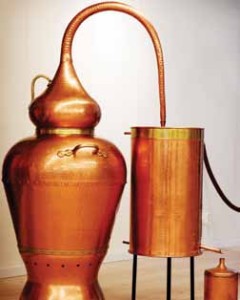 Gin’s Secret Power
Gin’s Secret Power
Gin begins, like vodka, as a neutral spirit (the base can be malt, corn, rye and/or molasses) It is the introduction of juniper and other botanicals that defines gin. Sometimes these potent flavorings are infused; often they are re-distilled; a third method has trays of herbs, roots, berries and spices work like a filter to flavor the steam of the distillate. In the end, gin is the extreme opposite of a neutral spirit. The particular mix of botanicals—always a guarded secret, whether it’s six, a dozen or more—drives each brand’s identity. Flexibility of production is one reason that many styles of gin have developed over several eras of the spirit’s varying popularity—as well as why so many craft distillers are joining the gin game. And while London Dry is arguably still the standard, it functions like a trunk of a very complex tree. No matter which direction gin goes, it goes with power and personality.
Gin Botanicals: Building Blocks of Character
Gin’s personality is a heady mix of assertive aromatics and flavors, led by spirit-defining juniper. A coniferous plant; Juniper’s contribution to gin’s character should be clean, green and pinelike (those juniper “berries” are actually tiny, smooth, pinecones). The juniper also works as a foundation for a variety of other spicy and savory botanicals—the exact combinations of which, naturally, are well-guarded secrets.
- Juniper berries: Piney, resinous. The EU requires it to be the “predominant” flavor in gin.
- Coriander seed: AKA cilantro. Tastes citrusy, unlike the leaves.
- Angelica root: Bitter, slightly herbal/musky.
- Citrus peel: Think zest; peels of oranges, lemons, grapefruit, etc. add brightness.
- Orris root: Flowery. Widely used in potpourri.
- Cucumber: Very subtle and refreshing, not unlike cucumber water at health spas.
- Cardamom: Warm and pungent. Enjoyed in coffee in the Middle East.
- Cassia Bark: Sometimes called “true cinnamon.” Spicy.
- Licorice root: Used in herbal medicine as an anti-depressant. No wonder G&Ts make you feel good.
- Grains of Paradise: Similar to black pepper, which it once substituted for in European food.
- Anise: Anise or aniseed is an herb; similar to licorice and fennel.
- Fennel: A member of the carrot family whose anise-like bulb is prized by cooks
What’s Sloe Gin?
Infused High Proof Gin made with Sloe Berries
- Sloe berries, which grow wild in the hedgerows of England, look like a mash-up of a blueberry and a Concord grape. But looks deceive: sloes are quite astringent and unpleasant to eat.
- Resourceful distillers came up with a way of infusing them in high-proof gin, extracting their essence and tempering it with a bit of sugar.
- The result is yet another branch of the convoluted gin tree, most famously paired with citrus and soda water to make the Sloe Gin Fizz.
![]()
![]()
![]()
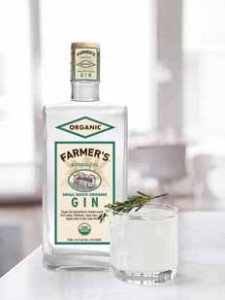 BRAND SPOTLIGHT: Featured Brand Farmer’s Gin
BRAND SPOTLIGHT: Featured Brand Farmer’s Gin
By definition, gin is not shy. The botanicals, introduced to pure neutral spirit, are critical to both character and quality. And since gin’s flavor begins with famously assertive juniper, it could be argued that in no other spirit category is the provenance of ingredients so important.
Farmer’s Small Batch Organic Gin, it all starts with USDA Certified organic grain. Distillate produced from organic grain has a remarkably clean character, perfect for an infusion of botanicals. In turn the botanicals are especially flavorful thanks to the liveliness and intensity that cannot be found in mass-production crops.
Power Meets Its Match: Balance
But the real key to the Farmer’s botanical mix is not strength but balance. Because many gins are one-dimensional and driven by juniper, Farmer’s relies on a host of complementary botanicals:
- Elderflower brings a delicate floral flavor.
- Lemon Grass adds vibrant, lemony notes.
- Coriander, one of the oldest known gin botanicals, has a citrusy, nutty flavor.
- Angelica Root brings a slightly sweet, warm, aromatic, musky taste.
Several remaining botanicals—kept secret, of course—are also essential to the Farmer’s Gin flavor profile, while the final ABV (46.7%; 93.4 proof) delivers intensity in sync with the gin’s bright, citrusy character.
The botanicals and organic grains used in Farmer’s are grown on land free of chemical pesticides and fertilizers.
Styles of Gin
- London Dry: This is the classic: dry, with a flavor based on juniper and hints of citrus. Many of the most popular brands are in this category.
- Plymouth: The only gin with Protected Designation of Origin status; fruity on the nose, with an earthy flavor from plenty of cardamom and coriander.
- Genever: The OG (“original gin”), invented in Holland around the 13th century; made with at least 15% malt, it has a richer mouth feel than most gins.
- Old Tom: This obscure, sweeter style has been called the “missing link” between London Dry and more full-bodied genever. It’s being revived as part of the cocktail renaissance.
- Navy Strength: The British navy was partial to gin at 114 proof (57% alcohol); these gins are popular with bartenders but might be a little strong for home consumers.
- New American: Gin is one of the most popular spirits for local craft distillers to make. It doesn’t require barrel aging and can offer a distinctively different taste.
- Barrel-Aged: The Dutch have produced barrel-aged genevers for centuries, but barrel-aged gin —brown, like whiskey—is a newbie on these shores. Most local producers are still tinkering with the aging process to get the right amount of oak flavor. It’s too early to tell if it’s a fad or has staying power.
All About Tonic
Tonic is Extract from Cinchona Tree Bark added to Fizzy water
- Tonic comes to us from the Incas by way of the British empire. The Incas in Peru and Bolivia used bark from the cinchona tree to stop shivering. Spanish explorers soon figured out that the tree bark would treat malaria.
- By the 1800s, scientists had isolated quinine from cinchona. Powdered quinine was added to fizzy water and voila, tonic water. British administrators insisted their men drink tonic water daily as a malaria prophylaxis.
- Almost immediately the Brits starting adding gin to it—and one of the world’s most perfect cocktails was born.
Selling Points
Some people will never like gin—it smells like a Christmas tree and tastes like medicine to them. But here are selling points that play off gin’s strength…
- It’s Exotic – “Where else are you ever going to be able to encounter botanicals like orris root and cardamom and elderberry and fir?”
- It’s Complex – “If you like sipping spirits, gin is the final frontier: so different from whiskey or Cognac, but arguably just as complex and rewarding.”
- It’s Savory – “You don’t look like someone who drinks strawberry-kiwi vodka; gin is the most savory of spirits… a very grown-up flavor profile.”
- It’s New – “Wanna try something really new?” (Gin is old in the grand scheme of spirits; but it is new to a lot of today’s LDA adults. Remember: Millennials love to experiment and they love authenticity; gin has both those areas covered.)
- It’s Classic – “If you are ready to pour a G&T at home at any given moment, you are halfway to being a perfect host.”
Beefeater is the world’s most awarded gin. It is made with the finest botanicals using Handcrafted Process by the world’s most experienced Gin Master Distiller.
This summer, Beefeater Gin is putting a twist on the gin and tonic. How? By promoting the B.L.T., a variation that calls for lemon instead of lime. Lemon is true to the classic way to drink a Gin & Tonic in the U.K., and also takes advantage of Beefeater’s remarkably clean flavor balanced with strong citrus notes.
Introducing the B.L.T. Cocktail
Bold but simple, the playful B.L.T. campaign will run May through August—prime Gin & Tonic season—both in advertising and colorful, London-inspired point-of-sale. The pitch here is appropriately reverential, encouraging home mixologists to “elevate this classic.” At the same time, the B.L.T. serves an important function of reaffirming Beefeater’s position as a premium call brand. Michelle Yukhtman, Associate Brand Manager for Beefeater, notes that the B.L.T. plays strongly into the current premiumization trend within the category. “There is a natural appeal for shoppers who want to use an authentic, premium brand, to choose Beefeater for their Gin & Tonic.” Perhaps most important of all: B.L.T. makes a simple drink better, without making it more complicated. According to the 2015 MSS US Macro Trade Report, the Gin & Tonic is the 2nd most popular simple drink among consumers, and the 3rd most popular simple drink ordered according to bartenders.
B.L.T. cocktail recipe:
- 2 parts Beefeater Gin
- 3 parts Tonic Water
- Serve with a Lemon
Share this link or read it via PDF.

